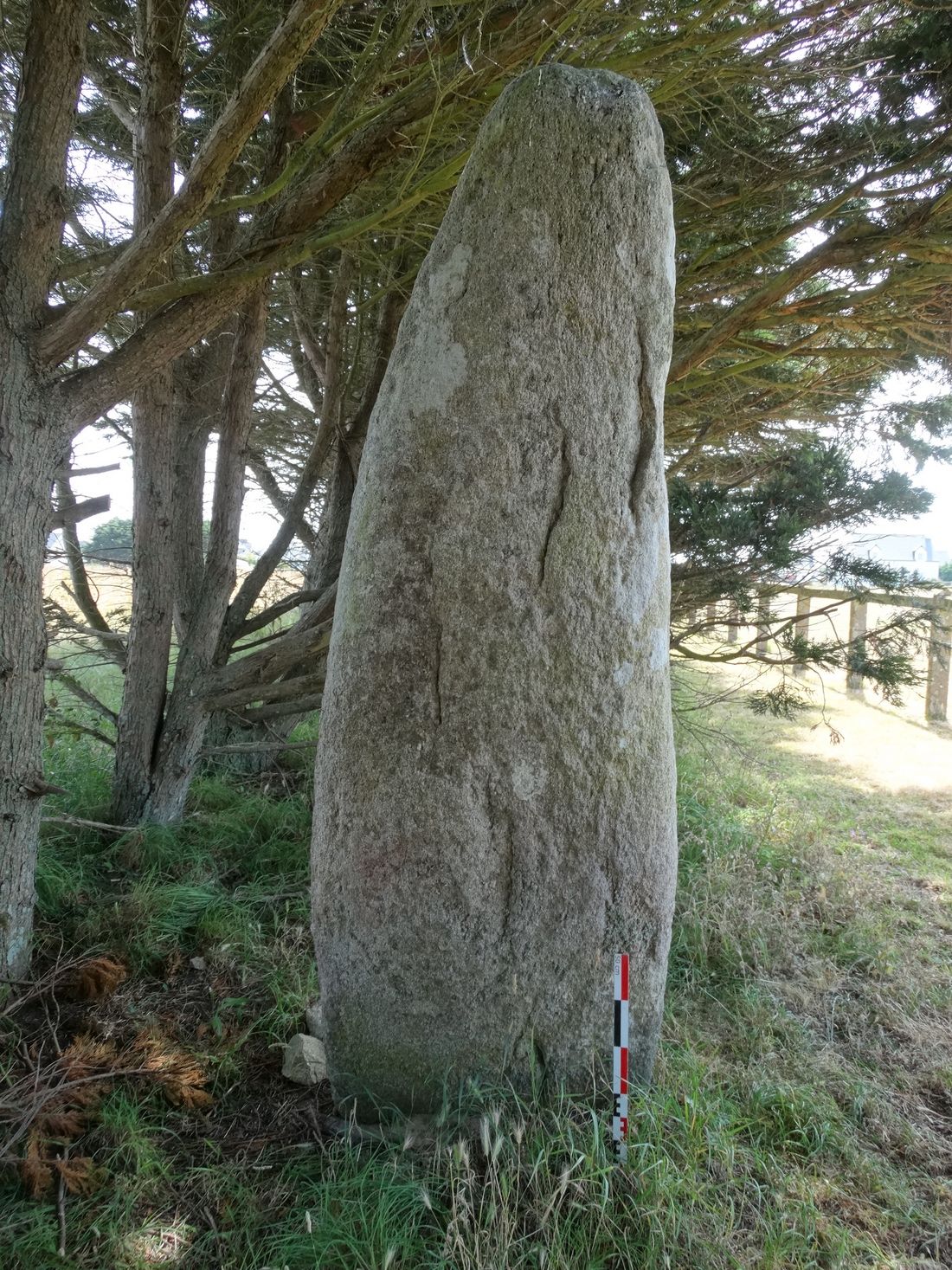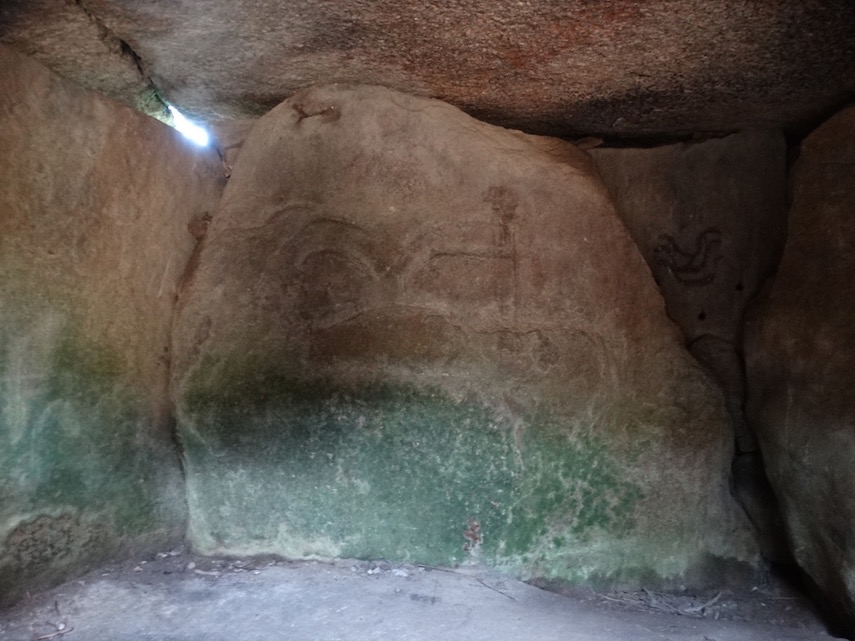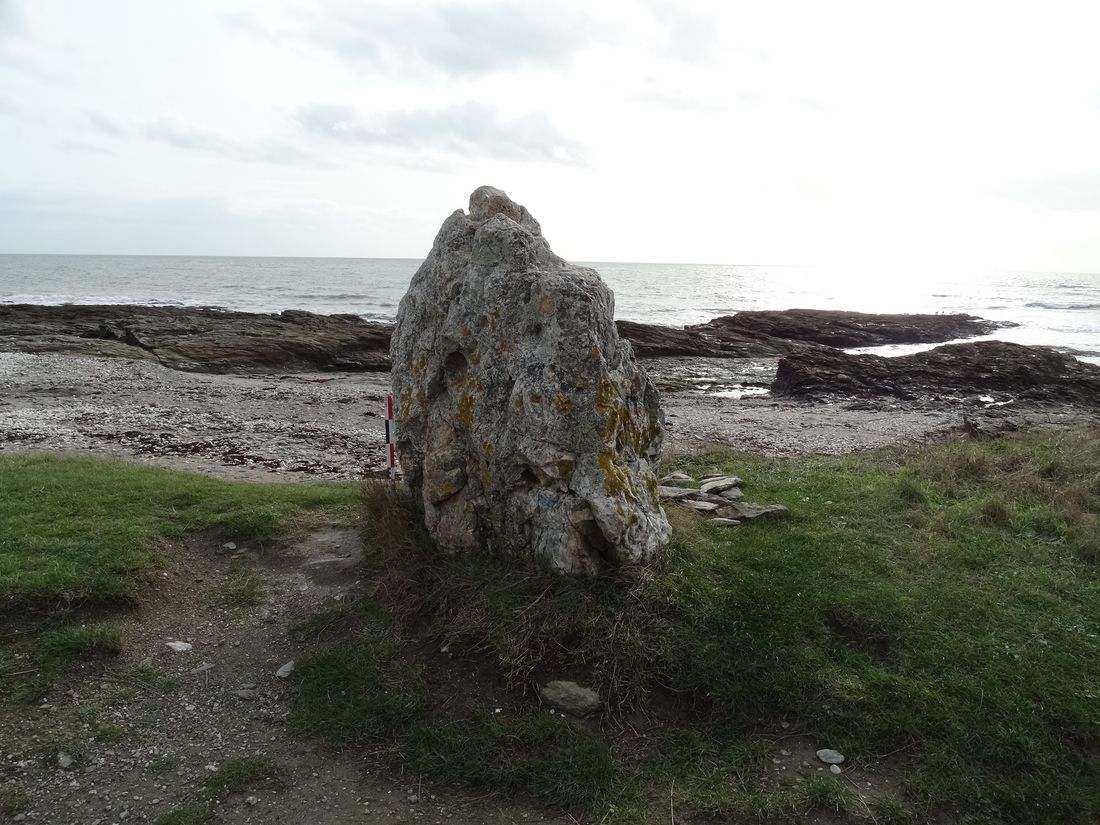Our application comprises 5 attributes. These major characteristics are interdependent; their interrelatedness contributes to the distinctiveness of the site.
I. STONE ROWS
Standing stones (steles) can be found in many regions of the world, from different periods in history. Morbihan is exceptional in that there are some 150 sites with more than ten thousand stone rows, mostly arrayed in linear fashion, often extending out of view, and occupying an area of 38,000 hectares virtually uninterruptedly.
The handling of several thousand tonnes’ worth of stones to make such structures is a major technical feat, especially given that certain monoliths are of exceptional mass (up to 330 tonnes) and height (up to 21 metres), unrivalled anywhere else in Europe.

©EmilieHeddebaux/PaysagesdeMégalithes
II. GRAVES
This area is full of burial structures, often associated with stone rows. There are both individual graves (beneath round or elongated mounds) and passage graves, generally intended for several individuals, of outstanding architectural diversity and abundance. The graves may be isolated or grouped together within a single burial monument, sometimes included within the organisation of a monolith alignment, or built with repurposed standing stones.
Three graves in particular undeniably stand out, due to the extraordinary quantity of materials used to make them, the fact that these materials had to be transported over both land and sea, and above all due to their exceptional grave goods, unique in Europe : these include axe-heads from the Italian Alps and beads from Andalusia. Each has a complex architecture with a function that, over and above being merely practical, forms part of a much larger symbolic system.

©EmilieHeddebaux/PaysagesdeMégalithes
III. ROCK ART
With 158 engraved slabs revealing a great diversity of graphical expression, the outcrops, standing stones, and graves in the geographical area in question account for half of the known total in France for the fifth and fourth millennia BCE.
The Gavrinis monument alone has almost one linear kilometre of engravings on the grave walls. The symbols found belong to a very particular register that does not really have any equivalent, including representations of objects (jade axe-heads, stone bracelets, bows and arrows, throwing sticks, and boats), wild animals (whales, snakes, and birds) and domestic animals (goats and cattle), together with few anthropomorphic figures and geometric shapes.
These engravings are not simply there for ornamental purposes; they are positioned and assembled according to predefined graphic codes in an iconographic programme that runs from slab to slab. Representations of axe-heads with or without handles are specific to the region, and unique in Europe in terms of the numbers found and dimensions achieved.

©EmilieHeddebaux/PaysagesdeMégalithes
IV. DEPOSITS
Another distinctive feature of this geographical area is the unprecedented quantity of polished artefacts made from rare materials originating a considerable distance away. These deposits comprise weapons (polished axe-heads made from Alpine rocks, which account for 10% of jade in Europe) and jewellery sets (arm rings and necklaces made from Alpine and Andalusian rocks). The beads and pendants made from callaïs (variscite and turquoise) account for over half of all discoveries in northern France.
Buried or submerged at specific locations in the landscape (rocky outcrops, fords, and marshes), arranged around bodies in graves, buried immediately adjacent to standing stones, sometimes purposefully destroyed, these symbolic objects no longer serve their original purpose, but resemble votive offerings, adding extraordinary symbolic strength to the architectural space.
V. COASTAL LANDSCAPE
The layout of the megalithic sites and monuments of the Property is closely related to the coast. The presence of the sea on the horizon accompanies most megalith locations forming the Property. The presence of an enclosed, naturally protected expanse of water allowing traffic between all its shores (the ‘Small Sea’, Mor Bihan) resulted in a mosaic of environments and outstanding ecological value attracting humans from the Mesolithic period onwards. Water must also be seen as vital in the dynamic of transfers in the Neolithic, including the transportation of extraordinary monoliths and the development of shipbuilding. This led to more distant trade along waterways and by sea, notably along the jade and callaïs routes. Furthermore, the coastal environment led to naturally crystallised sea salt being observed, harvested and later produced: the highly-coveted white mineral was an excellent trade good and an essential everyday ingredient.
The coastline is not limited solely to the shores of the ‘Small’ and ‘Large’ seas; it also includes the banks of rias and rivers entering the sea, often with tidal activity, sometimes over 20 kilometres or more from the coast itself. Consequently, it also encompasses the ecosystems found in the immediate hinterland (drainage basins, coastal marshes, mudflats, and wetlands). The biogeographical and geo-cultural components of this attribute form the framework of the transition between land, sea and marshland through the natural penetration of valleys flooded by rising sea levels (rias).
The coastal location in a landscape with few woodlands in the Neolithic established the highly visible monuments as a symbolic panorama that could be seen from afar, bearing witness to the power and ingenuity of those who that created it.

©EmilieHeddebaux/PaysagesdeMégalithes
